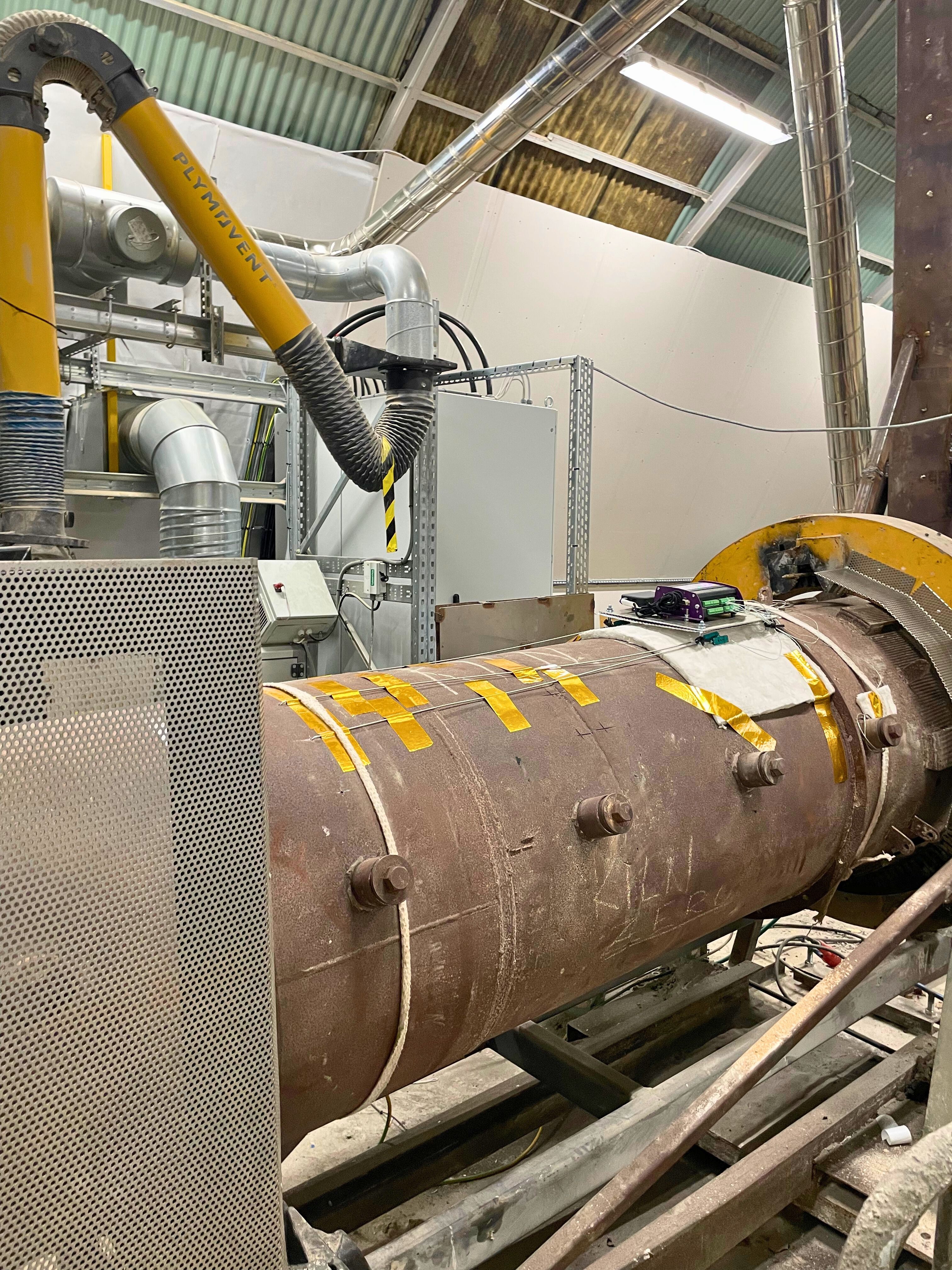Clinker produced with plasma generator
Major breakthrough for plasma-heated cement kiln in Sweden
Simplified carbon dioxide capture, stable process, lower carbon dioxide emissions, no fuel ash and higher quality clinker. These are the results of tests on the world's probably first plasma-heated cement kiln.
"It looks very promising," says Bodil Wilhelmsson, project manager at Heidelberg Materials and responsible for the tests. "We started the tests at the end of last year and can now say with certainty that this is the right way to go: we will be able to produce clinker with plasma.”
The tests are part of the ELECTRA project, which is exploring new technologies to replace traditional combustion processes with electricity-based solutions in the long term. Plasma technology is one of these technologies.
A major advantage of electrifying cement production is that the resulting flue gas is almost pure carbon dioxide gas. This means that the carbon capture step in the CCS chain can be simplified, leading to:
- lower energy consumption
- lower carbon emissions and
- lower investment costs for the entire production chain, including geological storage of carbon dioxide, as the total amount of carbon dioxide is also reduced.
"In this way, this research is an excellent complement to what may in the longer term become a more developed and efficient CCS technology," says Bodil Wilhelmsson.
Less emissions
Fuel-related carbon dioxide emissions from cement production are eliminated because no fuel needs to be used in the production process.
Instead of fuel, carbon dioxide gas is heated to over 5,000 degrees, where it becomes a plasma jet that heats the material in the kiln.
"The absence of fuel in the process means that there is no ash in the product. This means that a parameter that could affect the quality of the product if it fluctuates is no longer considered," explains Bodil. "So, it looks like the quality of the clinker can actually be slightly higher in this process.
This is backed up by a wealth of knowledge from laboratory tests, calculations, and simulations. The first results on the products from the plasma furnace show that the alite crystals are smaller than in conventional clinker, indicating that a more reactive cement can be obtained.
Stable process
"The main thing we have shown with these tests is that it is possible to have a continuous manufacturing process using plasma. Previous tests have been done in small batches, but we have run the furnace for a maximum of 54 hours. This is unique and an important step forward.”
The main challenge now is to seal the furnace even better. The aim of the project is to have 99% carbon dioxide gas in the kiln. Now it is only 60%, which is due to leakage. So, the kiln has to be sealed and an overpressure created.
Carbon dioxide is the so-called carrier gas used in the furnace. The gas is heated to 5000 degrees by electricity, creating a plasma jet. The plasma itself is very hot, but the radiant heat is low. Instead, it is heated mainly by conduction and convection.
The carbon dioxide used in the furnace is then purified and returned to the plasma, where it is used again as a carrier gas. This is a closed cycle, where only the carbon dioxide extracted from the raw material is processed for geological storage.
- Facts:
- The furnace in Slite is 300 kWel. In 2026, a larger 1 MWel furnace will be built in Skövde, where the tests will continue in 2027.
- The tests are part of the ELECTRA project, which is co-funded by the EU's Horizon Europe programme, which is exploring new technologies to replace traditional combustion processes with electricity-based solutions in the long term. About the ELECTRA project

| This project has received funding from the European Union’s Horizon Europe research and innovation programme under grant Agreement no 101138392 |

Process4Planet |
Downloads
Clinker produced with plasma generator in Kiln Zero rotary kiln. .
Clinker produced with plasma generator in Kiln Zero rotary kiln. .

KilnZero- Plasmakiln in Slite. KilnZero with advanced measurement equipment to monitor the process in terms of temperature, gas composition and material development.
Illustration of plasma kiln.
Clinker produced with plasma generator in Kiln Zero rotary kiln. .
Clinker produced with plasma generator in Kiln Zero rotary kiln. .

KilnZero- Plasmakiln in Slite. KilnZero with advanced measurement equipment to monitor the process in terms of temperature, gas composition and material development.
Illustration of plasma kiln.


